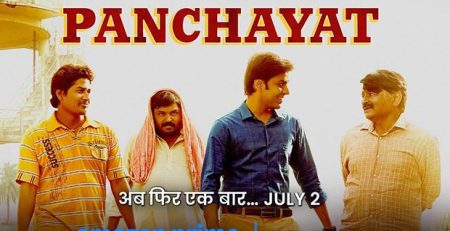Manvat Murders review: Ashutosh Gowariker show is a trudge
Share this post
The ghastly murders that rocked the Marathawada region in Maharashtra in the early 70s have been the source of many fevered re-imaginings in the movies. The most significant aspect of Avinash Bende’s eight-part series ‘Manvat Murders’ is the way it captures the quotidian amidst all the grisliness, without lending itself to melodrama, laying bare the evil that lives amongst us in all its banality and ferocity.
It’s also important to note the way the Marathi language series draws attention to the ritualistic aspects of the killings — of the ten victims, most were young pre-pubescent girls, and the others were grown women, some with their private parts drained of blood, some with heads severed—is markedly matter-of-fact, which is refreshing.
And that’s down largely to the fact that the lead investigator on the case, Ramakant Kulkarni, is played by Ashutosh Gowariker at his unflappable best (The series is based on Kulkarni’s book, Footprints on the Sands of Crime). Deputed from Mumbai to Manvat, Kulkarni arrives at the small Manvat thana, whose occupants reflect the people they police: some are complicit, some are corrupt, and the rest are inept, as we discover when Kulkarni starts to pull the scattered pieces together.
The cops are shown to be at sea by the flurry of brutal, senseless killings. An anonymous letter points to powerful local couple Uttamrao Barahate (Makrand Anaspure) and his consort Rukmini (Sonali Kulkarni) who, with the help of the latter’s sister Samindribai (Sai Tamhankar) make and sell illegal hooch. Early on, it is established that Rukmini cannot bear children, and she will do anything to ‘cure’ her barrenness. Somewhat later, there are murmurs of an ancient treasure under the tree in the Barahate house.
As the body count rises, accusing fingers are pointing everywhere. A microcosm of rural Maharashtra of the time, with the class divide, abject poverty and the hold of superstition over everyone rises to the surface : the series has a distinctive colour palette, a landscape of mud mounds, bracken-ish water, and fields. A local tantrik is found lurking near Kulkarni’s guest house, and a voodoo doll is found in his room. Could this be an occult thing?
The advantage of mixing known and unknown faces is evident in the way it makes us see. Gowariker keeps his cool even in the most trying circumstances and you wonder what will make him to yell. He’s solid, even when he meanders about sleuthing which goes everywhere before it reaches somewhere. As is Kulkarni, who seems to be in everything these days. The one who leaves the most impact is Tamhankar, who pulls off a tough combination of gullibility and watchfulness.
The show takes its time to come to its conclusions, and by the fifth episode, you can feel the stretch, even if the duration of each episode is around 35 minutes or so on an average. The intrigue is lost when the show decides to take recourse in explanation, and this is especially so in the final episode, when we are given a wholly extraneous flashback with Kulkarni adding two and two and making it four. And five. And six. The decision to keep it lowkey, which comes off fine to begin with, leads to leadenness.
Post the mid-way mark, ‘Manvat Murders’ becomes a trudge. The real-life case was a tangle of wires, old wives tales, evil spirits who live in trees, hidden treasures, the power of menstruating women. When you unravel it so that everything becomes explicable, some of the power is leached away. Why not leave something to our imaginations?












Leave a Reply